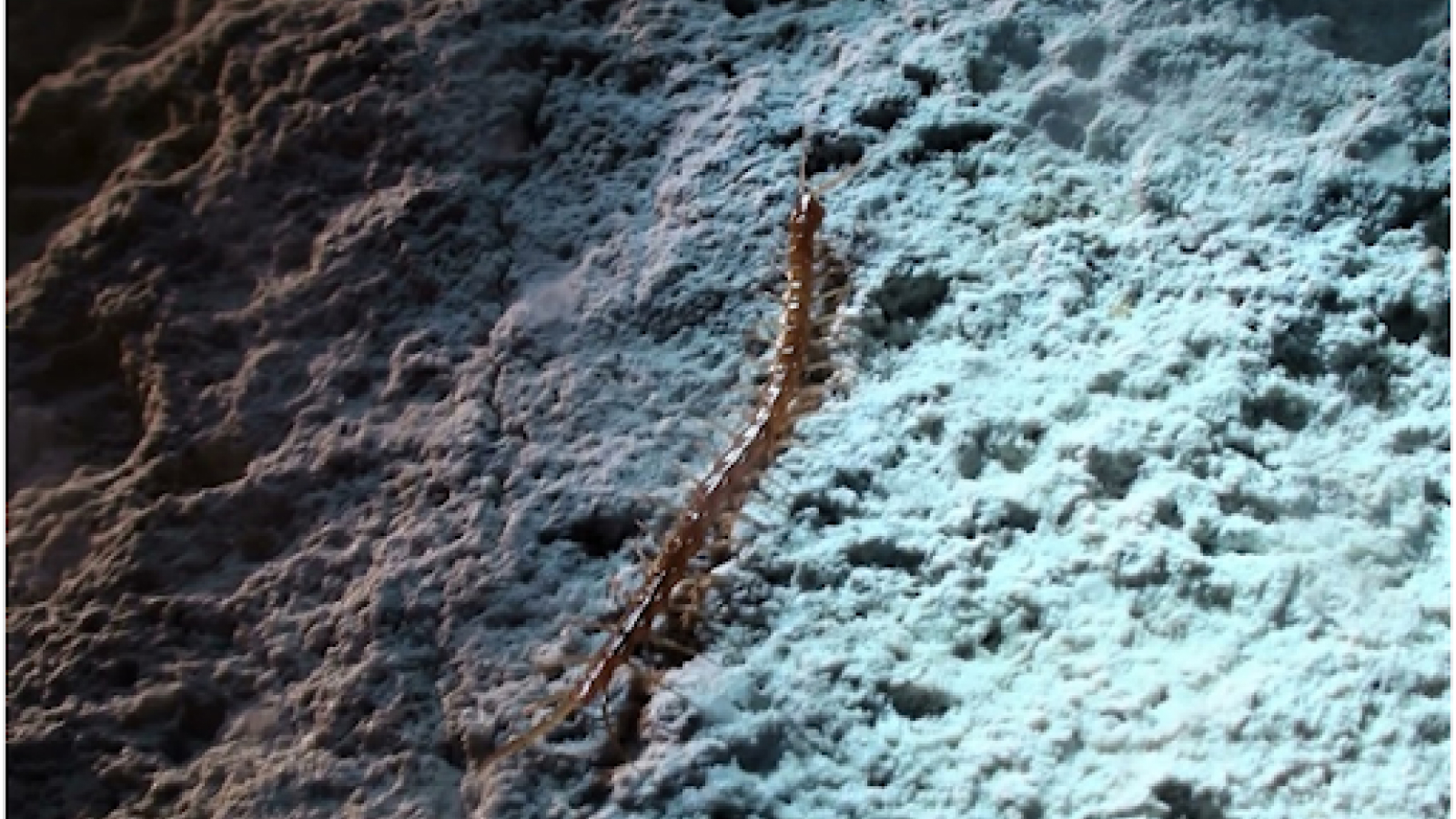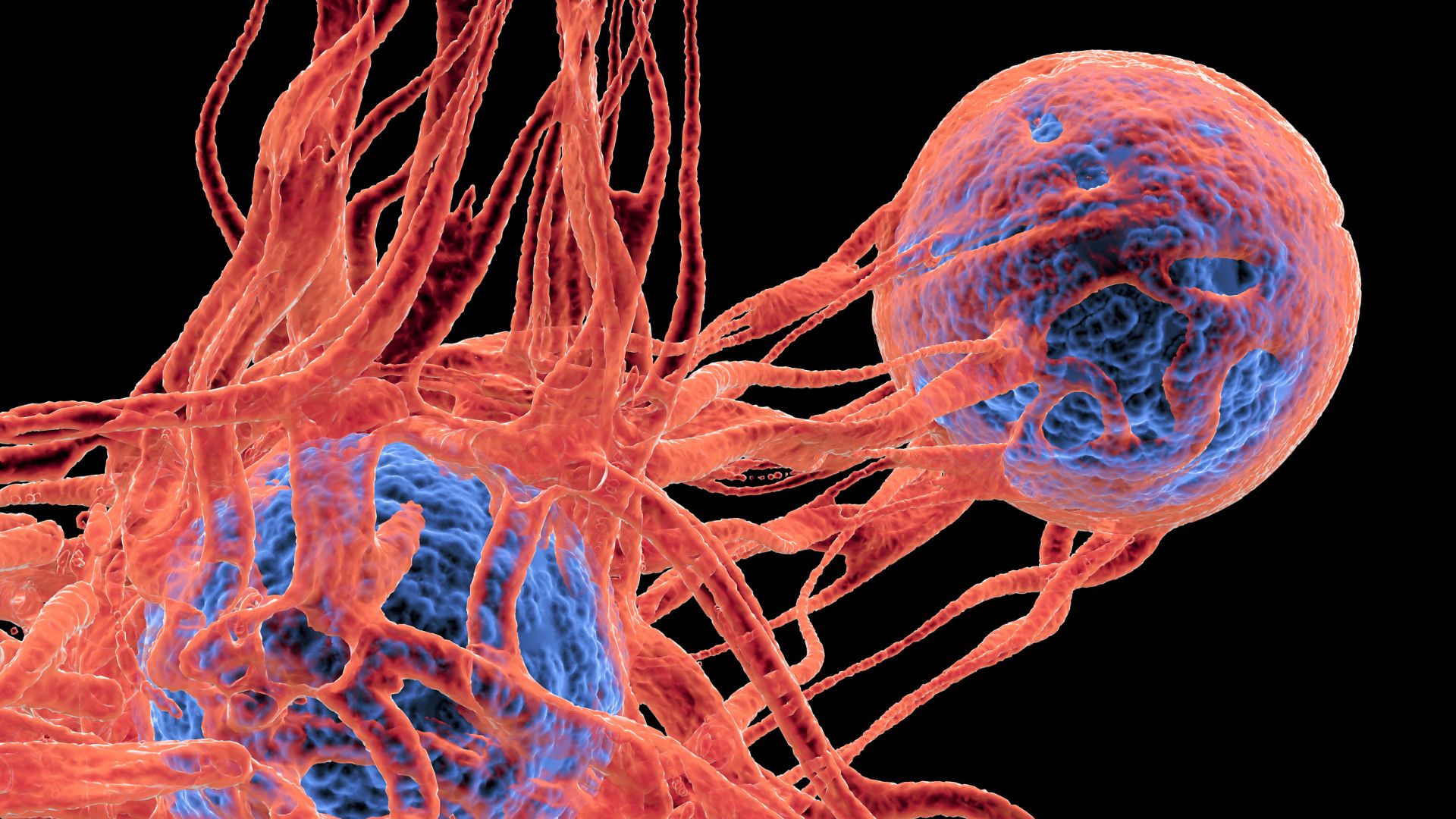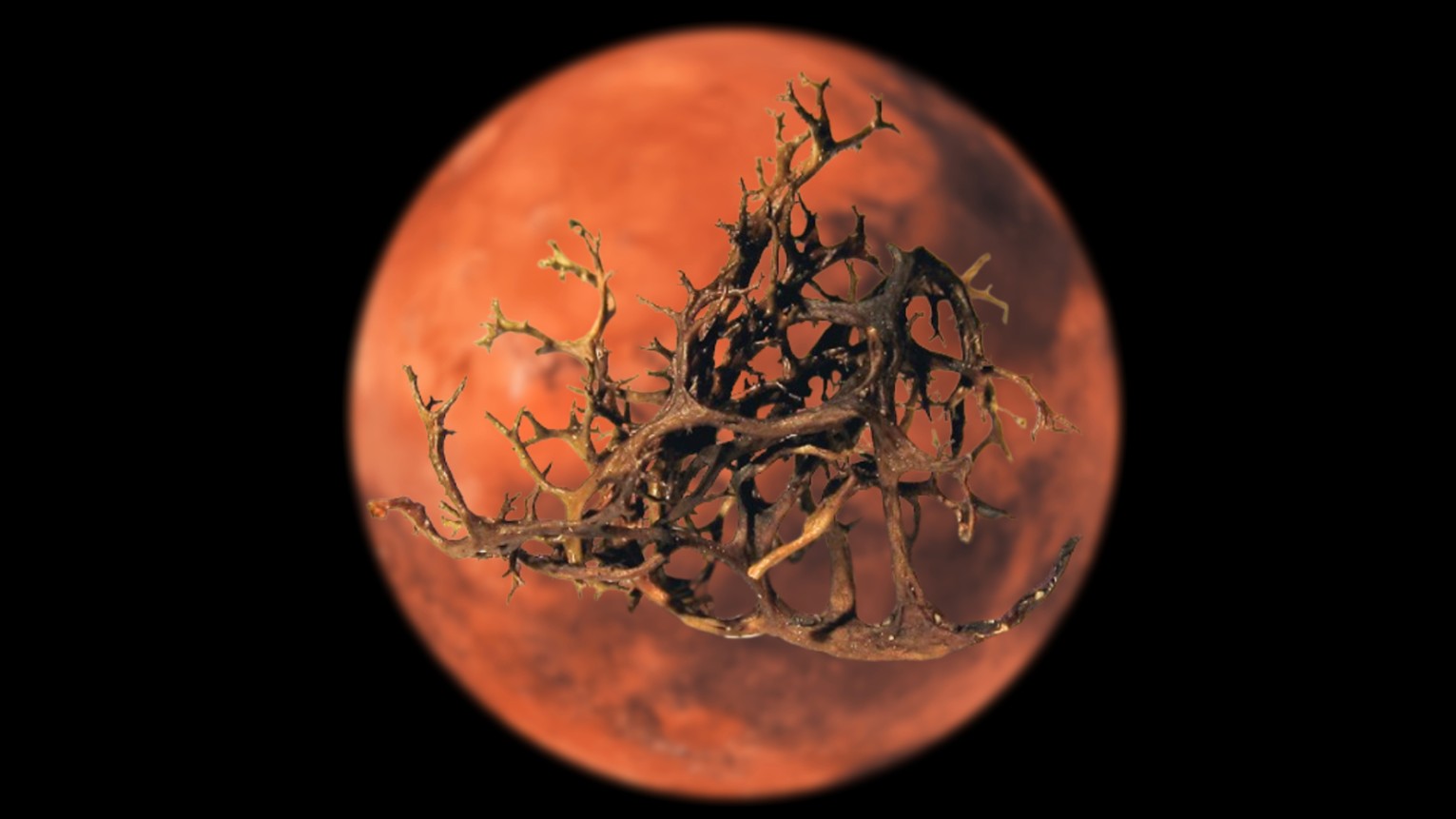King of the cave centipede: The deadly, blind giant that evolved in the darkness of a Romanian cave
The venomous centipede crawled into the Movile Cave millions of years ago and adapted to live in the pitch black, surrounded by deadly gases.

Name: King of the cave centipede (Cryptops speleorex)
Where it lives: Movile Cave, southeastern Romania
What it eats: Insects, spiders and smaller centipedes
Why it's awesome: This deadly, yellow centipede has evolved to live in the Movile Cave — a pitch black, sulfurous underground system untouched by sunlight for more than 5 million years.
Discovered in 2020, Cryptops speleorex — meaning "king of the cave" — sits at the top of the food chain in the unique ecosystem. It is the largest invertebrate species in the cave, growing to between 1.8 and 2 inches (46 to 52 millimeters) long.
The centipede has adapted to life in complete darkness. Unlike its surface-dwelling cousins, C. speleorex has no eyes. Instead, it relies on other senses to track down prey, such as its long antennae that are highly sensitive to touch. These antennae help it detect vibrations and movements of prey in its environment. With its long, spidery legs, the king of the cave can navigate tight spaces with ease. The centipede has venomous pincers called forcipules that are designed to catch and immobilize prey once it gets close.
To survive in an environment that has no sunlight — and therefore no plants that produce energy via photosynthesis — the creatures in the cave depend on nutrients produced by bacteria through the oxidation of gases like methane and sulfur. This process is called chemosynthesis. C. speleorex then eats other creatures in the cave to gain these nutrients.
Sign up for the Live Science daily newsletter now
Get the world’s most fascinating discoveries delivered straight to your inbox.
The king of the cave also has to contend with the array of deadly gases in its home. The Movile Cave is abundant in hydrogen sulfide, methane, ammonia and carbon dioxide, while it has around half the normal level of oxygen in the air outside the system.
It’s not known exactly how they have adapted to survive these gases. However, C. speleorex breathes through spiracles connected to a tracheal system that may have evolved to efficiently extract oxygen in low-oxygen environments.
While some species found in the cave also exist outside of it — such as microscopic roundworms called nematodes (Nematoda) — C. speleorex does not leave its inhospitable home, according to the researchers who discovered it.
"Our results confirmed our doubts and revealed that the Movile centipede is morphologically and genetically different, suggesting that it has been evolving from its closest surface-dwelling relative over the course of millions of years into an entirely new taxon that is better adapted to life in the never-ending darkness," the researchers said in a statement at the time.

Lydia Smith is a health and science journalist who works for U.K. and U.S. publications. She is studying for an MSc in psychology at the University of Glasgow and has an MA in English literature from King's College London.
You must confirm your public display name before commenting
Please logout and then login again, you will then be prompted to enter your display name.









